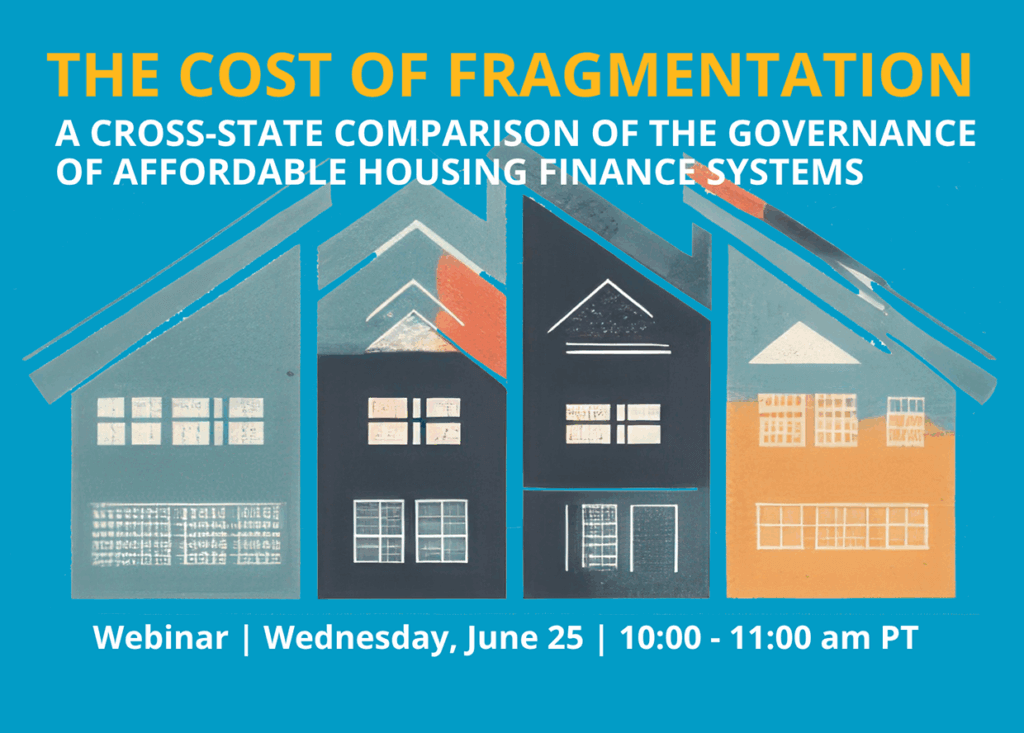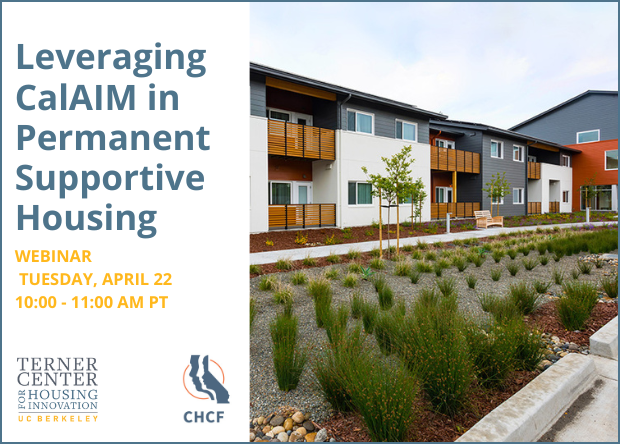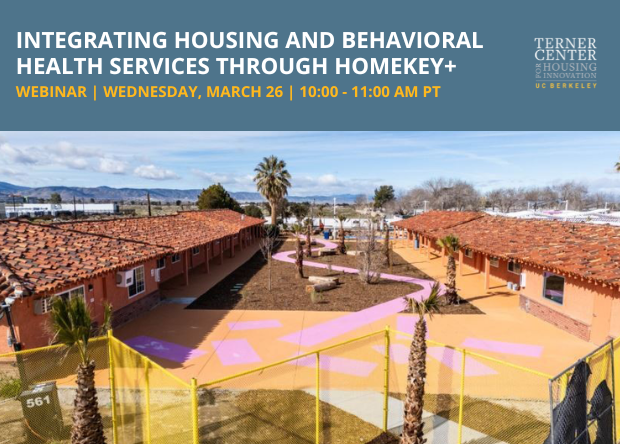Past Webinar: Exploring Challenges and Successes of the Emergency Housing Voucher Program: Insights from Public Housing Authorities
Published On May 9, 2023
The Terner Center hosted a webinar on Wednesday, May 17, featuring leaders from three Public Housing Agencies (PHAs) on strategies for housing people through the Emergency Housing Voucher (EHV) program. Beginning in 2021, the EHV program provided 70,000 vouchers to house a significant share of people at risk of or currently experiencing homelessness across the country. However, EHVs have not been used to their full potential everywhere; as of February 2023, more than one-fifth of PHAs had yet to lease more than half their vouchers.
During the webinar, Christi Economy from the Terner Center shared findings from our recent commentary on the EHV program. Next, an expert panel of leaders from three PHAs from across the country described their approaches for leasing up all or nearly all of their EHVs, including strategies that might help other PHAs overcome common challenges for doing so. The discussion was moderated by Joy Moses, Vice President of Research and Evidence at the National Alliance to End Homelessness, who also described findings from her own research on the EHV program. The rich discussion extended beyond implementation of the EHV program, including the role of voucher programs in the broader system of housing subsidies, as well as strategies for developing robust homelessness service systems.
Speakers:
- Mary-Margaret Spikes Lemons, President of Fort Worth Housing Solutions in Texas
- Emilio Salas, Executive Director, Los Angeles County Development Authority
- Robin Walls, Executive Director of the King County Housing Authority in Washington
Moderator:
- Joy Moses, Vice President of Research and Evidence, the National Alliance to End Homelessness
The following five highlights came out of the conversation:
- Investing in relationships between ‘housing’ and ‘homelessness’ systems is key to quickly leasing up vouchers. All three panelists highlighted the crucial role of coordinated efforts among housing authorities, service providers, and Continuums of Care (CoCs) in effectively addressing homelessness. They spoke to stakeholders’ complementary roles: housing authorities provide vouchers and subsidies, direct service providers offer essential supportive services to voucher recipients, and CoCs coordinate local homelessness systems and ensure equitable distribution of resources. The panelists discussed how the Coordinated Entry System can be a pain point in some places where it can be difficult to identify potential voucher recipients quickly while also prioritizing specific populations with high service needs. The discussion emphasized the importance of building relationships based on trust, transparency, and shared goals by maintaining clear lines of communication. For example, Mary-Margaret Spikes Lemons, President of Fort Worth Housing Solutions in Texas described how PHAs and service providers collaborated using a single data system for referrals that they could all access, and held weekly partner calls to lease up their EHVs. Panelists discussed how regular coordination in their jurisdictions enabled targeted programs for specific populations or needs, reduced duplication of services, and increased efficiency while addressing homelessness within their communities.
- Targeted, intentional strategies are necessary to address racial inequities and combat discrimination. Panelists emphasized the importance of addressing racial inequities in homelessness. In all three of their jurisdictions, Black people are significantly overrepresented among people experiencing homelessness. Panelists described using the EHV program as one tool to address racial disparities in homelessness. Emilio Salas, Executive Director of the Los Angeles County Development Authority described a process of deploying vouchers strategically to reach populations overrepresented in the homelessness system, rather than on a first-come-first-served basis. To aid racial equity efforts, panelists discussed the importance of understanding historical and structural factors that contribute to racial disparities in homelessness, the need for culturally competent services and interventions that consider the unique experiences and challenges faced by marginalized communities, the critical role of partnerships with community-based organizations, and the value of data collection and analysis to identify racial disparities and monitor progress. The panel also discussed attempts to mitigate discrimination faced by voucher holders, particularly people of color, through education and outreach to landlords.
- Overcoming barriers to housing supply requires an all-hands-on-deck approach. Panelists discussed how increasing the supply of affordable housing is essential to providing long-term solutions for individuals experiencing homelessness, including for the effectiveness of the EHV program. Panelists highlighted a number of strategies for increasing supply, including increasing investment in affordable housing programs and policies, addressing regulatory and zoning barriers that hinder the development of affordable housing, engaging with local communities and advocating for supportive housing initiatives, and exploring innovative approaches (i.e. tiny home communities) to expand housing options. Robin Walls, Executive Director of the King County Housing Authority in Washington described how the PHA has acquired housing units to make available to voucher holders, including units in resource-rich neighborhoods. The panelists also acknowledged the importance of engaging landlords to increase housing options available to voucher holders. As part of the EHV program, panelists described a number of ways that they increased landlord participation, including offering monetary incentives and providing ongoing support services to tenants.
- Workforce and staffing challenges remain a significant obstacle to providing effective services. Panelists highlighted the need for a well-trained and dedicated workforce to meet the growing demand for homelessness services. Emilio Salas discussed how temporary agencies filled much of the needed workforce to quickly roll out the EHV program in Los Angeles. Low pay, coupled with difficult, complex, and often traumatic work, can lead to high levels of burnout and turnover among service provider staff. Panelists stressed the importance of supporting staff members with appropriate resources, supervision, and self-care practices. Strategies to attract and retain staff included telework, flex time, and a four-day workweek. Overall, the panelists recognized that workforce and staffing challenges require ongoing attention and investment to effectively respond to the needs of individuals experiencing homelessness.
- Funding for supportive services can help get and keep people stably housed: All three panelists reflected on the value of the services funding that accompanied EHVs (approximately $3,500 per voucher). PHAs used this supplementary funding to connect people experiencing or at risk of homelessness with housing units more effectively. In Fort Worth, the PHA used the supplementary funds to hold units for voucher holders and incentivize landlord participation through extra deposit funds. Top of mind for panelists, however, was ensuring stability for voucher holders. EHV implementation in King County included local funding for wraparound case management to keep people safely and securely housed. Access to these types of resources could help other jurisdictions support EHV recipients’ efforts to exit homelessness and thrive after moving back into housing.
Watch the full video of the webinar here, and the presentation slide deck with findings from our research on EHVs is available here.
Click here to read our full commentary on the EHV program from March 2023.





